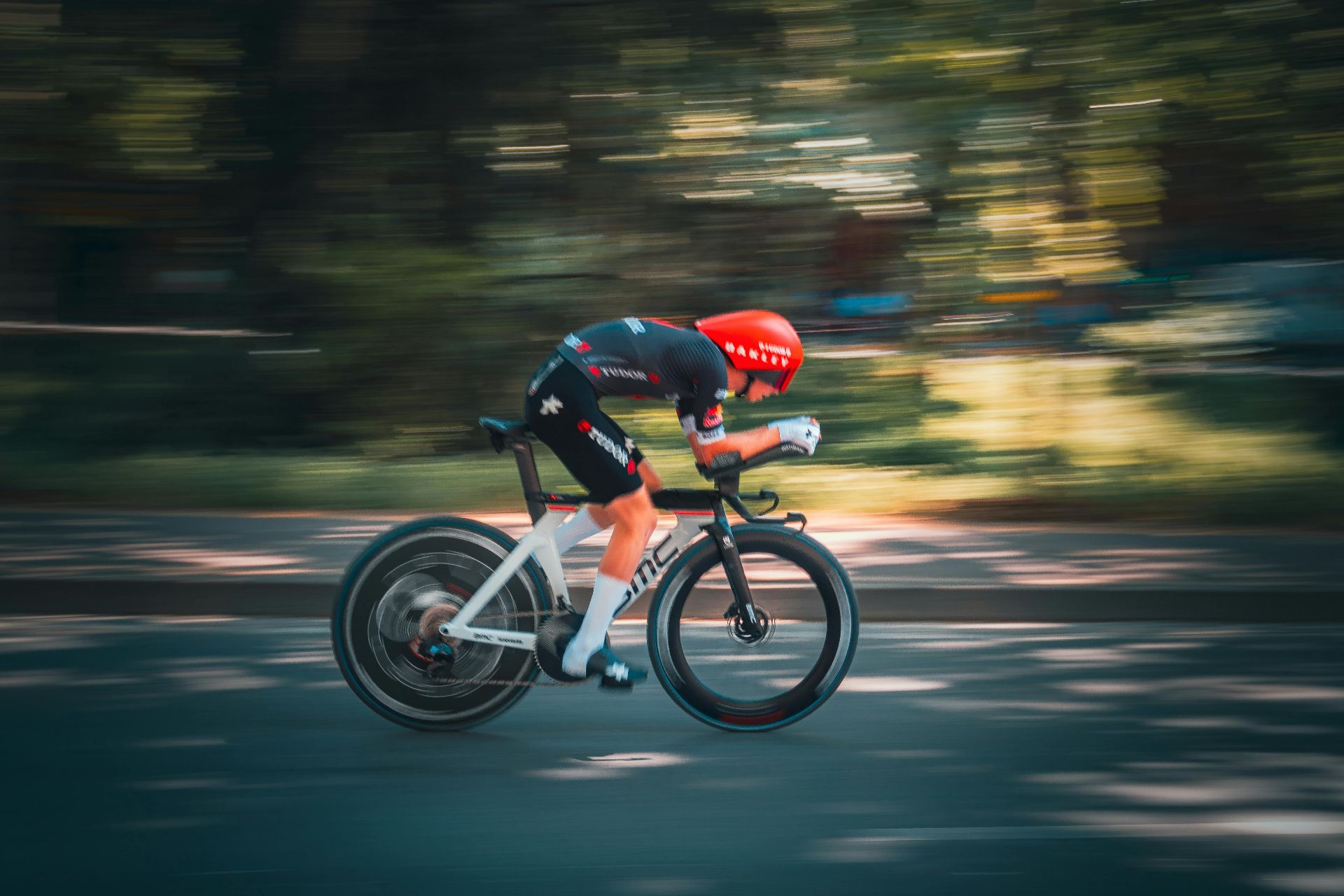How We Calculate Aerodynamic Drag at RaceYourTrack

🚴♂️ How We Calculate Aerodynamic Drag at RaceYourTrack
The Chung Method, developed in the early 2000s by Robert Chung, makes it possible to determine the aerodynamic drag coefficient (CdA) from real-world power data — without the need for a wind tunnel or lab testing. A detailed description can be found in his article Estimating CdA from Power Data (PDF), licensed under Creative Commons Attribution (CC BY 3.0).
Chung’s approach was both elegant and practical: ride several laps on a consistent circuit, record power and speed, and find the parameters that bring the energy balance into equilibrium.
💨 The Idea Behind the Chung Method
Chung recognized that his method offered several major advantages:
- Wind compensation – Headwinds and tailwinds largely cancel out over a full lap.
- Calibration-free – Absolute elevation or power drift have little effect, since only relative energy changes are analyzed.
- Simple implementation – No wind tunnel or lab equipment is required; only real ride data from a power meter and speed sensor.
This made aerodynamic testing accessible to everyone — precise, repeatable, and practical.
🌍 Our Implementation for Real-World Routes
In practice, few riders train or race on perfectly flat, closed circuits. That’s why RaceYourTrack uses an extended implementation of the Chung Method that directly accounts for real elevation profiles.
We compare the simulated altitude with the actual recorded data and optimize the parameters that minimize the deviation. This allows for accurate estimation of aerodynamic drag (CdA) even on real GPX tracks.
Whenever power data is available — from a rider’s own power meter — our system automatically performs the calculations in the background. CdA and rolling resistance parameters are determined without manual input and seamlessly integrated into the physical simulation model.
🧩 Key Features of Our Implementation
- Wind is taken into account directly through selected weather conditions.
- Fully compatible with real GPX data – including elevation changes.
- Numerically stable, since optimization is based on altitude rather than instantaneous power.
- Physically consistent through complete energy balance.
- Automated parameter optimization integrated directly into our simulation.
- Automatic computation whenever power data is available (power meter).
🧠 For Those Who Think in Formulas
The following equations summarize the physical principles behind our implementation of the extended Chung Method:
$$\Delta E_{\text{pot}} = m g \Delta h = 0$$
$$P_{\text{mech}} = P_{\text{roll}} + P_{\text{aero}} + P_{\text{acc}}$$
For routes with elevation changes:
$$P_{\text{mech}} = m g \dot{h} + C_r m g v + \tfrac{1}{2} \rho c_w A v^3 + m v \dot{v}$$
$$\dot{h}_i = \frac{P_i - C_r m g v_i - \tfrac{1}{2} \rho c_w A v_i^3 - m v_i \dot{v}_i}{m g}$$
$$h_{\text{sim}}(t) = \int \dot{h}_i \,dt + h_0$$
The optimal parameter pair $(c_wA, C_r)$ is found by minimizing the deviation between simulated and measured altitude:
$$\text{RMSE}(c_wA) = \sqrt{\tfrac{1}{N}\sum_i (h_{\text{sim},i} - h_{\text{real},i})^2}$$
🏁 Conclusion
- The Chung Method provides a robust, wind-independent way to estimate CdA from real ride data.
- RaceYourTrack applies this method in an extended form to real-world courses with climbs and descents.
- Comparing simulated and measured altitude enables a precise, transparent analysis of aerodynamic drag.
- Once power data is available, the calculation runs fully automatically — no manual setup required.
From a clever concept to a powerful analytical tool — bringing precision aerodynamics directly to the road.
📚 Source
This method is based on the work of Robert Chung: Estimating CdA from Power Data (PDF), licensed under Creative Commons Attribution (CC BY 3.0).
Photocredit: Pexels/ Paolo Bici
➡️ Learn more about our simulation physics at RaceYourTrack.com